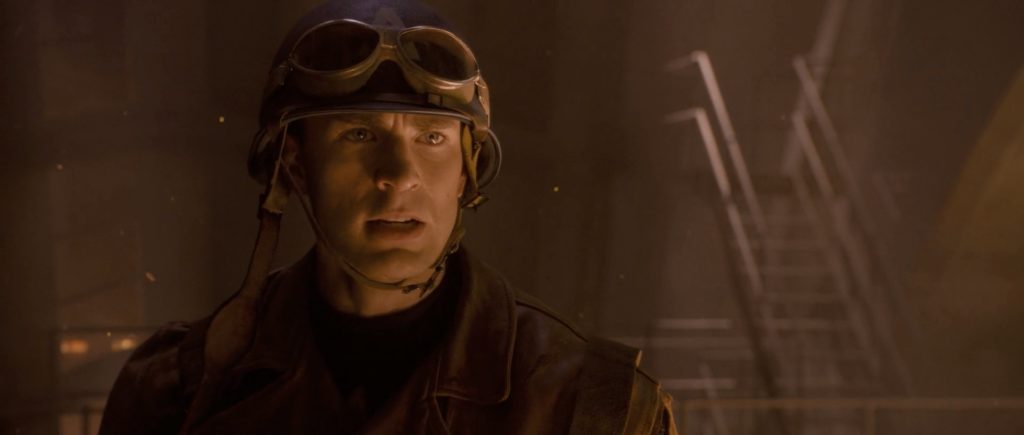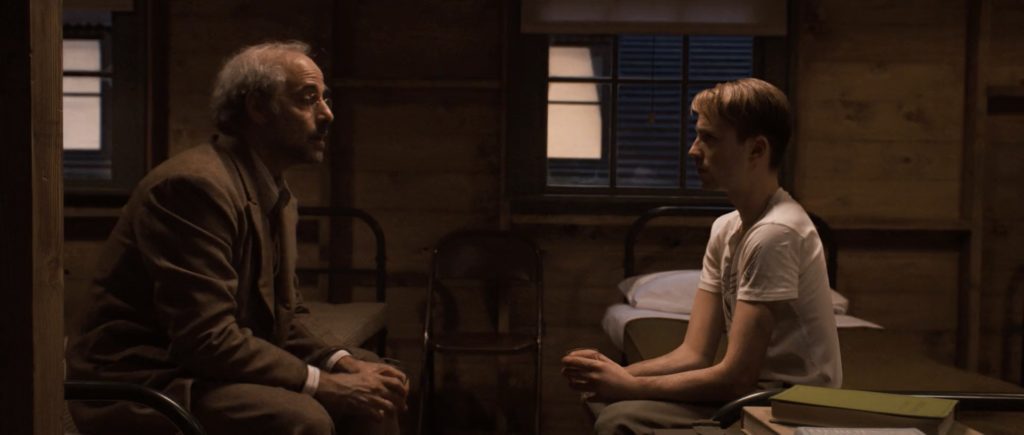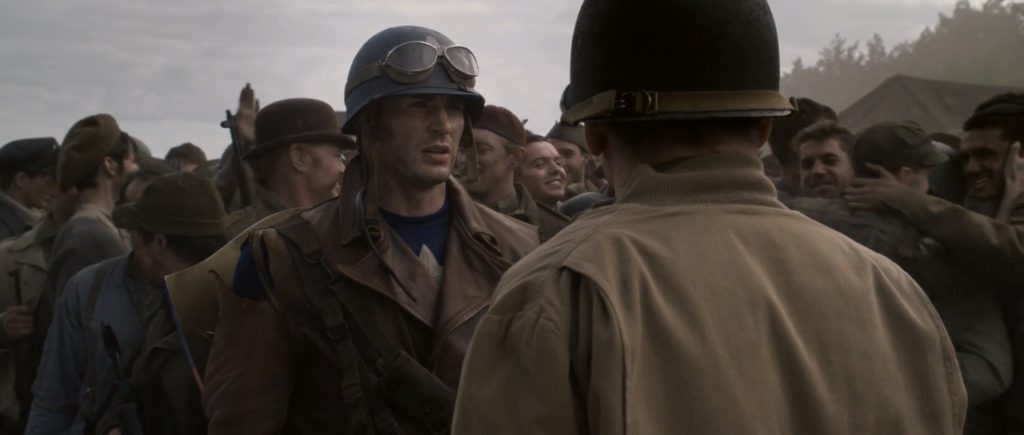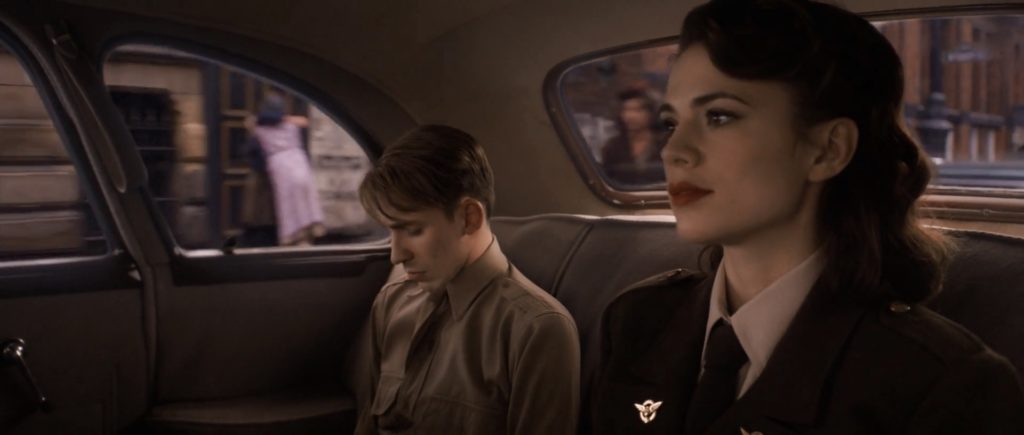In this weekly series, we chronicle the long road undertaken by the Marvel Cinematic Universe movies to arrive at Avengers: Infinity War. We introspect and discuss the movies from a critical and commercial standpoint while also considering the development efforts that went behind them. These articles may be occasionally sprinkled with spoilers so please make sure to skip the relevant sections when reading.
This post is about the 2011 movie Captain America: The First Avenger, the fifth chapter in the Marvel Cinematic Universe.
By this point, Marvel had examined three heroes in the four movies on the way to setting up its Cinematic Universe. In the run up to this film, Marvel had introduced to the world an alcoholic, narcissistic billionaire who suited up as Iron Man, a mild-mannered scientist whose abnormal exposure to gamma radiation resulted in a condition that triggered his transformation to the Hulk, and a bulky bratty and arrogant God who redeems himself and proved his worth while coming to be known in Norse Mythology as the Mighty Thor. The one thing common about these three heroes was that they were all inherently flawed in some way. All of them were less than ideal role models for kids and played loose with morality, leaving behind plenty of destruction along their way.
Continuing their efforts to bring something new and contrasting to the table with each successive film, the final solo hero in the lead-up to their first team-up saw Marvel debut its most idealistic superhero to date. One who was grounded by a very strong sense of character and righteousness. One who was desperate to join the United States’s efforts to thwart the Nazi forces during World War II despite his scrawny physique and worrisome medical history. And one who, most importantly, was a genuinely good man inside out, striving to do nothing but the right thing. The comic book based movie studio figured it was time for us to meet the benevolent soul, Captain America.
Compared to his compatriots, the First Avenger’s solo outing had a rather smooth development journey even though Marvel’s attempts at bringing him to the big screen had begun as early as 1997, with writers Larry Wilson and Leslie Bohem commissioned to develop a script. A clash of ownership with creator Joe Simon stalled the film’s development for three years between 2000 – 2003 until it was eventually settled. By then, Marvel had received its $525 million grant from Merrill Lynch to independently self-produce its own feature films and decided to include Captain America among its first batch of movies. Marvel initially set a 2008 release only to have that thrown off by development procedures and the 2007 – 2008 Writers Guild of America strike although Marvel was able to strike a truce with the guild that ensured the strike didn’t affect its projects as much as it would have.
With his experience in directing the World War II flick The Rocketeer, and his ability to weave a plausible narrative out of an unbelievable plot as witnessed in Jumaji, Joe Johnston was brought own board to direct. He would go on to hire writers Christopher Markus and Stephen McFeely to write the script, yet another historic decision seeing how long these writers would stick with the MCU as a whole and what they wound up doing with the Captain America franchise. Although the plan was to initially have the film set both in the past and the present day with each time-frame occupying roughly half of the movie, this plan was dropped in favor of completely exploring the World War setting of the cinematic universe.
 Captain America’s story is perhaps one of the most pivotal pillars of the Marvel Cinematic Universe. The serum which gave Cap his strength, has been the McGuffin of at least one other movie and several TV Show episodes set in the shared universe. The plot in general is however, more than the super-soldier formula that gives Cap his powers. Always eager to join the army, and disappointed yet persistent despite repeated rejections, Steve Rogers gets the opportunity he’s looking for when a scientist, Dr. Abraham Erskine spots him at the Stark expo. Impressed by his sincerity and truthfulness, he sets up a meeting with Rogers and becomes convinced that Rogers is just the man they need for the secret project he’s been working on with the US Army Colonel Chester Philips. It involves injecting an ordinary human with the experimental super-soldier serum that would give him such enhanced abilities as increased speed, strength, memory and reflexes.
Captain America’s story is perhaps one of the most pivotal pillars of the Marvel Cinematic Universe. The serum which gave Cap his strength, has been the McGuffin of at least one other movie and several TV Show episodes set in the shared universe. The plot in general is however, more than the super-soldier formula that gives Cap his powers. Always eager to join the army, and disappointed yet persistent despite repeated rejections, Steve Rogers gets the opportunity he’s looking for when a scientist, Dr. Abraham Erskine spots him at the Stark expo. Impressed by his sincerity and truthfulness, he sets up a meeting with Rogers and becomes convinced that Rogers is just the man they need for the secret project he’s been working on with the US Army Colonel Chester Philips. It involves injecting an ordinary human with the experimental super-soldier serum that would give him such enhanced abilities as increased speed, strength, memory and reflexes.
So why chose the weakling over several other potential candidates out there? The answer, lies in the way the serum works in that it inherently amplifies its host’s internal attributes. In the words of Erskine, good becomes great and bad becomes worse. An example of the latter is Nazi scientist Johann Schmidt who, in his quest for attaining power surpassing Hitler’s had himself injected with the serum resulting in a permanent disfigurement of his face. Reluctantly convinced by Erskine’s logic after seeing a demonstration of Rogers’s courage at the camp, he is taken to the secret facility by Col. Philips and injected by the serum in an elaborate laboratory procedure. The facility is interestingly operated by Tony’s father Howard Stark who in his prime, very much resembles his son in his mannerisms and characteristics. Unfortunately, the events immediately following the procedure ends up wrecking the super soldier formula leaving Rogers as the only carrier. Too afraid to risk Rogers in the battlefield, he ends up wasting his abilities in a nation-wide PR-tour posing as the masked hero Captain America. However, when one of the troops including his best friend Sargent James Buchanan Barnes goes missing, he decides to take matters into his own hands and goes on a single-handed rescue mission to save them, effectively proving he can be used as more than a publicity gimmick.
Among the interesting aspects of the movie, is how it focuses on the man before the transformation. Sure, most of the movie is about Captain America but we spend a significant amount of time with him as Rogers in his weak form. And so convincing are the movie’s effects in these sequences that we actually believe Rogers’s condition and sympathize with his plight of wanting to do good yet being unable to by a string of rejections. The first act has some heartwarming moments with Steve Rogers, particularly a conversation between Erskine and Rogers where the scientist explains why Rogers is being chosen. Stanley Tucci is brilliant in the limited screen time that he gets and really sells the logic of choosing Rogers for the program even though the premise may seem preposterous upon narration. The fact that it translates so well on screen is a testament to Johnston’s great direction that really convinces you he’s the man for the job.
 Rogers’s transformation as Captain America segues to the movie’s second act which contains an amusing montage of Cap’s tour in costume. I found it to be an interesting take on the very first Captain America costume, and an intelligent way of using the original campy look in the movie without making it feel out of place. Kudos to the team for paying homage to their silliest of designs and respecting the significance they held in comic-book mythos. Of course the man in question Rogers is disappointed at being used in this manner, yet satisfied that he can at least contribute to the war in some way. Chris Evans brilliantly brings out the poignancy of this dichotomy in a sequence where he sketches his rendition of what he feels he’s become – a costumed monkey on a bicycle entertaining war soldiers. I only wish there were more of such scenes.
Rogers’s transformation as Captain America segues to the movie’s second act which contains an amusing montage of Cap’s tour in costume. I found it to be an interesting take on the very first Captain America costume, and an intelligent way of using the original campy look in the movie without making it feel out of place. Kudos to the team for paying homage to their silliest of designs and respecting the significance they held in comic-book mythos. Of course the man in question Rogers is disappointed at being used in this manner, yet satisfied that he can at least contribute to the war in some way. Chris Evans brilliantly brings out the poignancy of this dichotomy in a sequence where he sketches his rendition of what he feels he’s become – a costumed monkey on a bicycle entertaining war soldiers. I only wish there were more of such scenes.
Among the dynamics that he shares with several people, Evans’s relationship with two is particularly significant. The first is his romance with the glowing Peggy Carter who always seems to be dressed for the occasion. What initially starts off as mutual admiration – with Steve respecting Peggy as the lone woman in a sexist setup and Peggy respecting Steve’s dedication to join the army despite getting beaten up in lone alleyways several times – turns into an old school romance with a heartbreaking fate towards the end that tugs along your emotional strings. The fateful ending is definitely one of the strongest emotional punches delivered in a Marvel movie. The second relationship is the one he shares with his best friend Seargent James Buchanan “Bucky” Barnes. Their interaction starts off as Bucky being protective of Steve and gradually shifts in the other direction after Steve’s experiment with Rogers turning more protective of Barnes. Although his role is somewhat limited, Sebastian Stan leaves a mark before he too meets with a cruel fate. As is common knowledge among Marvel-dom though, we’re definitely not seeing the last of him.
Captain America jumps into action when a troop that includes his best friend is captured by the forces of the Red Skull. Somehow, at this point, the movie plunges into a tirade of action sequence that it never really recovers from. Once Cap gets his friends back, including the squad of the famed Howling Commandos, Colonel Philips recognizes Cap’s potential and sends him off on missions to destroy the Red Skull’s scattered bases. Soon, Cap gets outfitted with a new outfit, his trademark shield and hops from base to base laying waste to the Red Skull’s plans. And before we know it, Cap is standing face-to-face with the Red Skull himself for his final skirmish aboard Schmidt’s ship. The entire third act seems nothing but strung together by a series of consecutive set pieces which kind of loses steam midway. To add to it are some bizarre decisions made by characters; for instance the Red Skull choosing to self-destruct his own base and even having that option in handy, as also the ending and how easily the Howling Commandos just swing by the Red Skull’s ship. These strange choices mean the movie loses steam somewhere towards the finale, only to pick up in its fleeting moments once the Red Skull is dealt with.
 Marvel assembled a talented crew to helm this film and it shows in every frame. Director Joe Johnston infuses a gravitas to the narrative that makes this ridiculous on-paper story seem fairly believable. The writers too do a good job of bringing out some interesting sides to the narrative, even though this is definitely far from their best work. The movie itself takes inspiration from several comics, most notably The Adventures of Captain America: Sentinel of Liberty, a four issue series brilliantly written by Fabian Nicieza that plays out as a more expanded version of the movie despite being released in 1992. The plot flows smoothly and each scene is handled with finesse.
Marvel assembled a talented crew to helm this film and it shows in every frame. Director Joe Johnston infuses a gravitas to the narrative that makes this ridiculous on-paper story seem fairly believable. The writers too do a good job of bringing out some interesting sides to the narrative, even though this is definitely far from their best work. The movie itself takes inspiration from several comics, most notably The Adventures of Captain America: Sentinel of Liberty, a four issue series brilliantly written by Fabian Nicieza that plays out as a more expanded version of the movie despite being released in 1992. The plot flows smoothly and each scene is handled with finesse.
Johnston is also able to extract fine performances from the cast. Chris Evans, Hayley Atwell and Sebastian Stan give sincere and commendable performances in their roles as Steve Rogers, Peggy Carter and Bucky Barnes respectively. The supporting cast rounded up by Tommy Lee Williams as Chester Philips and Stanley Tucci as Dr. Abraham Erskine is equally laudable. Finally, despite his stance on the movie as of now, Hugo Weaving is maniacally excellent as the evil Johann Schmidt with dreams of running ahead of Deh Fuhrer himself. His sidekick, Arnim Zola is also competently portrayed by Toby Jones.
Although the movie is less demanding of special effects as compared to other Marvel installments, some heavy VFX work was done in shrinking Steve Rogers into a diseased kid, unfit for army business. The film-makers shot each scene four times – once with the normal Chris Evans, once with his double, once with green screen and once with just the background – to give the VFX artists at Lola several options to play around with. The company then varied its technique from shot to shot, using what’s best for each. This meant replacing the body double’s head with that of Evans on one shot and inserting a shrunk Evans digitally in another shot. The end result is that you can’t quite lay your hand on how exactly it was done, yet it gives a seamless result.
 One of the more memorable aspects of this movie is surprisingly, the score. Alan Silvestri gives an extremely memorable and hummable theme for its main character that maintains its patriotic flair and yet roots the character in emotions. It’s one of the best pieces of music in the MCU as a whole aside from Iron Man. And for a film series that is often criticized for its dull music, this comes across as a pleasant surprise.
One of the more memorable aspects of this movie is surprisingly, the score. Alan Silvestri gives an extremely memorable and hummable theme for its main character that maintains its patriotic flair and yet roots the character in emotions. It’s one of the best pieces of music in the MCU as a whole aside from Iron Man. And for a film series that is often criticized for its dull music, this comes across as a pleasant surprise.
On the whole, Captain America: The First Avenger is an enjoyable and entertaining flick that falls short of greatness because of its misdirected third act. The film ends on a high though, setting Cap up for what lies ahead. A build-up lasting five films would now crescent to its conclusion and make this film go down in the annals of history as one of the early pieces of this sprawling universe. It was now time to bring the team together.
It was now time for The Avengers to assemble.





